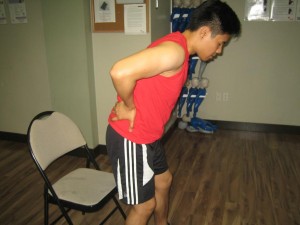Ankylosing spondylitis is a chronic, long-term inflammation affecting the joints amidst the vertebrae and between the spine and pelvis. As an autoimmune disorder, affected individuals have a distinct protein that wrongly triggers the immune system to attack the healthy joint tissues. Over time, the affected joints fuse together.
The condition generally develops between 20-40 years of age and common among men. Ankylosing spondylitis typically starts with pain and stiffness in the lower back and pelvis that worsens with activity especially during sleep or in the morning. The condition can improve with exercise. After some time, it can radiate to other regions of the spine and start to disrupt with mobility especially in the lower spine and oftentimes in the rib cage.
The course of the disease is unpredictable. There are phases of remission and unless the hips are significantly affected, there is a good chance of maintaining good spinal functionality.

Indications of ankylosing spondylitis
The indications of the condition start with intermittent episodes of lower back pain with both pain and rigidity that worsens at night time, upon waking up or during periods of inactivity.
Equally, the symptoms frequently improve with exercise. Even though the pain is initially localized in the sacroiliac joints, it can spread to other spinal areas as well as to other parts of the body.
The usual indications might occur daily or sporadically but there are times that they can be severe such as:
- Fatigue
- Progressive loss of spinal flexibility
- Subsequent diminished mobility
- Spinal stiffness
- Hip and buttock pain
- Lower back or sacroiliac pain
- Neck and shoulder pain
- Worsening discomfort and stiffness with inactivity
Management
The usual treatment for the inflammation and pain linked with ankylosing spondylitis are non-steroidal anti-inflammatory drugs (NSAIDs). In severe cases, some doctors prescribe corticosteroid drugs for their immune-suppressing properties.
Other medications such as tumor-necrosis-factor alpha blockers work by blocking certain inflammatory proteins to improve the symptoms. If corticosteroids are not suitable, the doctor might prescribe a cytotoxic drug to block the cell growth.
Aside from medical treatment, physical therapy is also beneficial. Surgery might be the last option in case of severe pain or joint damage.
